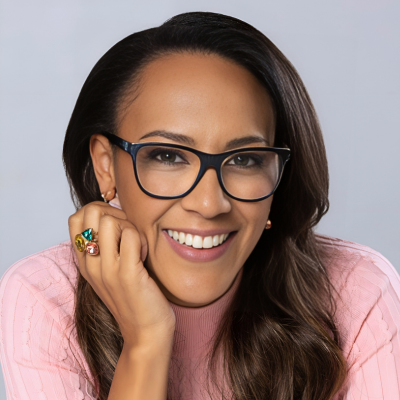
Think Australia’s Migration System Is the Same as the UK? Here’s What Nurses Need to Know
1. ✈️ One Migration System Does Not Fit All
If you’re a nurse who has migrated once already — to the UK, the US, Canada, or the Middle East — you’ve probably learned how to navigate complex systems.
But here’s the catch:
Australia’s skilled migration system is not the same.
We see this all the time — experienced nurses assuming they can follow the same steps or shortcuts they used before… and hitting unexpected roadblocks.
Australia has a completely different approach to both nurse registration and permanent residency — and if you treat it like “just another country,” you risk wasting time, money, and your eligibility.
2. 🧑⚕️ In Australia, You Need to Register Before You Can Work
In the UK and US, many nurses arrive first and sort out their licensing or registration after securing a job. Employers often support that process once you’re onshore.
In Australia, it doesn’t work that way.
To be employed as a registered nurse in Australia, you must be registered with the Australian Health Practitioner Regulation Agency (AHPRA) first. This is a formal process that requires:
-
Verification of your qualification
-
Meeting Australian standards of practice
-
Evidence of English proficiency (even if you’re already registered elsewhere)
-
And passing through one of six complex registration pathways
You cannot simply “arrive and start working” — even with years of experience.
⚠️ AHPRA registration is the first step — not the last.
3. 🛂 Job Offers Don’t Automatically Make You Visa-Eligible
In some countries, getting a job offer means you’re eligible for a visa — or even permanent residency.
In Australia, a job offer is just one piece of the puzzle. You must also:
-
Meet the migration requirements for your nominated occupation code
-
Have a valid skills assessment (usually through ANMAC for nurses)
-
Demonstrate proficient English at the level required for the visa — not just for registration
-
Be under a certain age (usually under 45 for skilled visas)
-
And pass health and character checks for you and your family
A job offer doesn’t guarantee a visa — and an employer isn’t responsible for checking whether you qualify.
If you don’t meet the visa criteria, the offer won’t help you.
4. 🎯 Points-Based Doesn’t Mean “Automatic If You Score Enough”
Australia’s General Skilled Migration program (189, 190, 491) is often referred to as “points-based.” But this leads many nurses to believe that if they score 65 or 70 points, they’ll automatically be invited.
This is false.
The system is competitive, not guaranteed. Even if you have the minimum points, you may:
-
Wait months — or even years — for an invitation
-
Miss out on nomination because another candidate had higher scores or priority experience
-
Get skipped because your Expression of Interest wasn’t properly structured
This is why strategy matters more than points alone. You need to:
-
Choose the right visa subclass
-
Know which states or territories are actually nominating
-
Present your application legally and competitively
5. 📋 There’s No Standard Processing Time
In the UK, you might be used to a visa having a standard processing window — for example, 8–12 weeks from application to decision.
Australia doesn’t operate like that.
Processing times in Australia vary depending on:
-
The visa subclass
-
Your occupation
-
Which state or territory is involved
-
The time of year (e.g. end of financial year allocations)
-
Whether nomination quotas have already been used up
In some cases, applications can move fast. In others, they may sit untouched for months — or be pushed into the next program year.
That’s why waiting for “the right time” can actually cause delays.
Starting early gives you time to meet all the requirements and respond quickly when opportunities open.
6. 👨👩👧 Visa Eligibility for Family Members Works Differently
In the UK, it’s common to sponsor family members later — or to assume they can join easily once you’ve secured your own visa.
In Australia, the migration law is stricter.
You must:
-
Include your partner and children at the time of application, unless you have a compelling reason not to
-
Meet functional English requirements for your partner, or pay a large additional visa charge
-
Prove that children over 18 are full-time students and financially dependent — no work history or gaps allowed
-
Understand that parents, siblings, and cousins are not eligible to be added to your skilled visa
These are not cultural interpretations — they are strict legal definitions. Getting it wrong can mean:
-
Your family being excluded
-
Paying double in future fees
-
Or having to start the entire process again
7. ⚖️ Australia Is a Legal System — Not Just a Process
At its core, Australia’s migration system is governed by law. It is:
-
Evidence-based
-
Deadline-driven
-
Policy-sensitive
-
And unforgiving of assumptions
If you make a mistake — like claiming the wrong occupation, lodging without a skills assessment, or misunderstanding your eligibility — your visa may be refused. And in many cases, visa application charges are non-refundable.
That’s why “DIY migration” based on social media advice is often a false economy.
Getting professional, legal advice from the beginning can save you thousands — and protect your future.
🌱 Ready to Start the Process the Right Way?
If you’ve already migrated once — but are now dreaming of a better life in Australia — it’s time to let go of what worked elsewhere.
Australia has its own rules. And you need your own plan.
👉 Start with our Nurse Registration Course to understand your AHPRA pathway:
👉 Book a legal consult with SOLVi to get clear on your visa strategy, family eligibility, and timeline:
You don’t need to guess. You need a clear, confident roadmap — tailored to your Australian dream.





